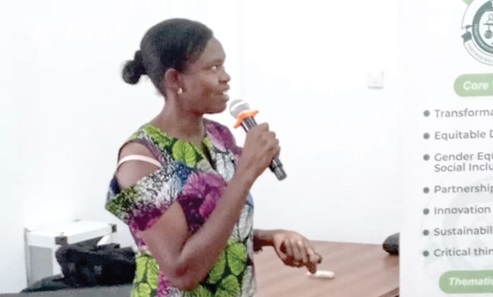
‘Galamsey’ activities pollute White Volta — Study
Tests conducted on the White Volta River that stretches through Northern Ghana and empties into the Volta Lake have revealed high levels of dangerous heavy metals due to illegal mining and sand winning activities along its banks.
Advertisement
The tests, conducted by Tama Foundation Universal, an extractive-centred CSO, working in Northern Ghana with technical support from the CSIR-Water Research Institute, showed high levels of mercury, cadmium, lead, iron, chemical oxygen, arsenic and manganese in the water.
The situation poses health risks to people who depend on the river for their livelihoods, as well as aquatic lives.
The findings showed that there were chemical oxygen demand levels of 1135mg/l; Iron 0.977mg/l; manganese 2.635mg/l; arsenic 1.45mg/l; cadmium 0.132mg/l and chromium 0.8mg/l, as against 250, 0.3: 10, 0.4, 0.010: 1.0, 0.003: 0.1 and 0.05: 0.1 recommended levels by the World Health Organisation (WHO) and Environmental Protection Agency (EPA) respectively.
Other water bodies
Additionally, the tests revealed high contamination of bacteria in water bodies in all mining areas in northern Ghana.
For instance, the data analysis of water bodies at Sheini, Nangruma, Bulinga, Nangodi and Kandema, among other areas, revealed a prevalence of total and faecal coliforms of 100 and 81 percent; E. coli & faecal enterococci, 18.75 per cent; pseudomonas aeruginosa, 31 per cent, and clostridium perfringens, six per cent.
Forum
The findings were presented at a stakeholders forum in Tamale, the Northern regional capital.
The research, which was funded by the Ford Foundation, was conducted to assess water quality at illegal mining sites in northern Ghana.
Participants included personnel from ministries, departments, agencies, local authorities, CSOs and traditional leaders who deliberated on ways to help address the menace.
Threat to life
A Research Scientist at CSIR-Water Research Institute, Zita Naangmenyele Abuntori, said the White Volta River and other water bodies in all mining areas in the north were under serious threat due to the use of mercury and other harmful chemicals for mining.

She said the use of the raw water could pose health risks to humans, especially infants, the aged and immune-compromised ones as a result of the heavy metals present.
Mrs Abuntori also said that there were diverse contaminant levels in all samples, with borehole samples generally exhibiting lower levels in contrast to those from mining pits and washing sites.
“Significantly, heightened levels of turbidity were recorded at Gbane washing site — 100 NTU and White Volta River — 800 NTU,” she added.
Mrs Abuntori recommended a yearly monitoring of all nearby water resources, especially the Volta River in northern Ghana.
Significance
The Executive Director of Tama Foundation Universal, Dr Chrys Anab, said the research sought to draw attention to the massive destruction being caused to water bodies by illegal miners and sand winners.
He expressed worry over the growing phenomenon and called for a concerted effort to help address it.
The White Volta, a river which flows from northern Burkina Faso, passes through the northern Ghana and empties into the Lake Volta.
It is the main source of water for both domestic and industrial use by residents of Tamale and its environs.
Writer’s email:[email protected]




